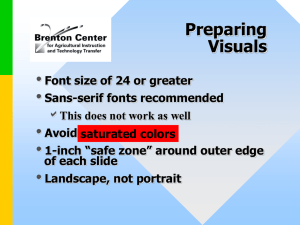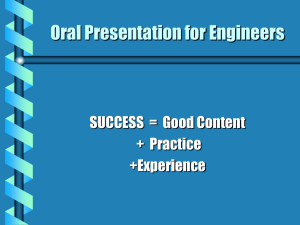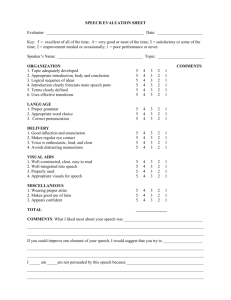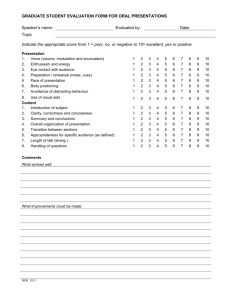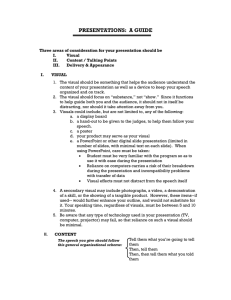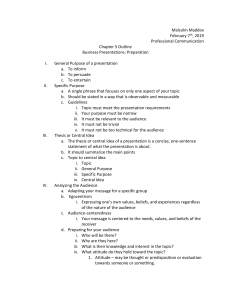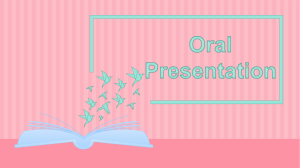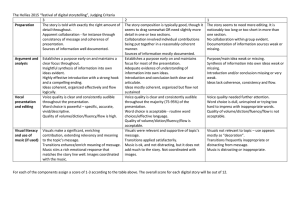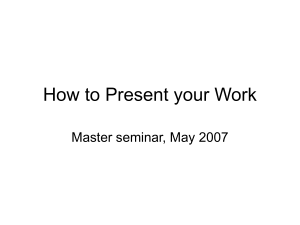Preparing and Presenting a Lecture
advertisement
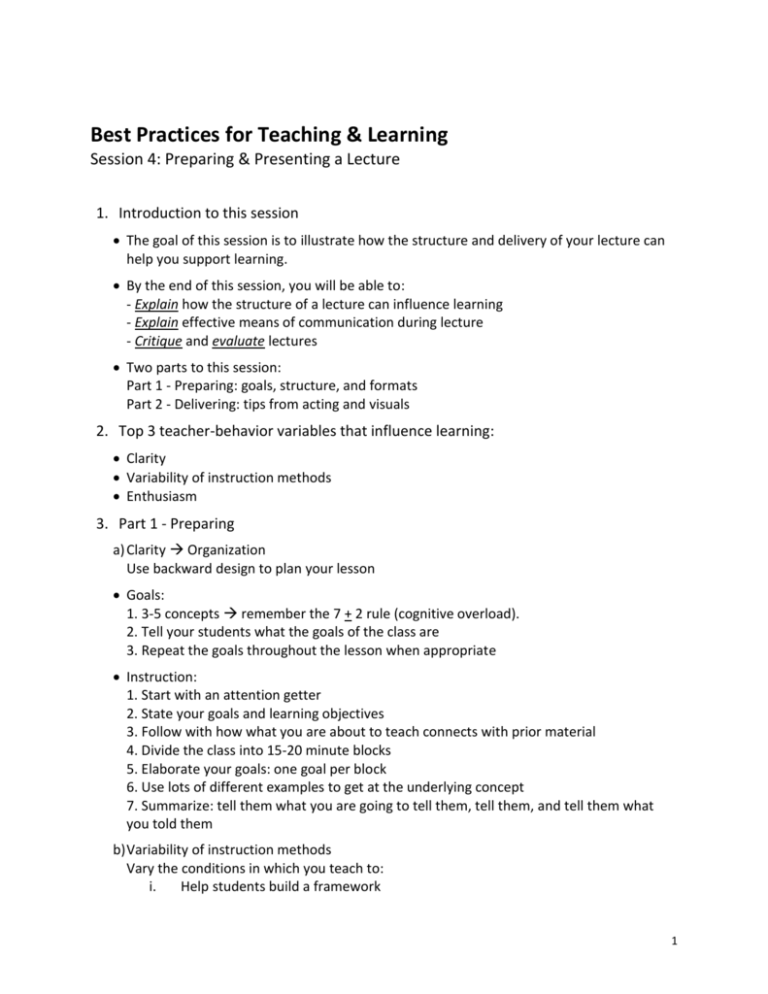
Best Practices for Teaching & Learning Session 4: Preparing & Presenting a Lecture 1. Introduction to this session The goal of this session is to illustrate how the structure and delivery of your lecture can help you support learning. By the end of this session, you will be able to: - Explain how the structure of a lecture can influence learning - Explain effective means of communication during lecture - Critique and evaluate lectures Two parts to this session: Part 1 - Preparing: goals, structure, and formats Part 2 - Delivering: tips from acting and visuals 2. Top 3 teacher-behavior variables that influence learning: Clarity Variability of instruction methods Enthusiasm 3. Part 1 - Preparing a) Clarity Organization Use backward design to plan your lesson Goals: 1. 3-5 concepts remember the 7 + 2 rule (cognitive overload). 2. Tell your students what the goals of the class are 3. Repeat the goals throughout the lesson when appropriate Instruction: 1. Start with an attention getter 2. State your goals and learning objectives 3. Follow with how what you are about to teach connects with prior material 4. Divide the class into 15-20 minute blocks 5. Elaborate your goals: one goal per block 6. Use lots of different examples to get at the underlying concept 7. Summarize: tell them what you are going to tell them, tell them, and tell them what you told them b) Variability of instruction methods Vary the conditions in which you teach to: i. Help students build a framework 1 ii. Keep the class engaged c) Think-Share Activity For a concept you would like to teach: i. Determine the goal and learning objectives for that concept ii. Think about the material you will cover to support teaching of that concept iii. Choose a lecture format that will be appropriate and justify your decision 4. Part 2 - Delivering a) Enthusiasm: What can we learn from actors: 1. Intonation 2. Connecting & engagement 3. Managing anxiety Visuals: 1. Board work: i. Be accurate and clear ii. Structure your board work so that it is easy for students to follow and read 2. PowerPoint: less is MORE i. Remember the 7 + 2 rule: do not put more than 5-6 key points on a slide ii. Very little text and lots of graphs are better than just text. iii. Pay attention to: - Colors that cannot be seen - Fonts that are not readable - Font sizes that are too large or too small - Organization of content on a slide - Slide backgrounds can be distracting - Animations can be distracting iv. Remember to be redundant between what you are saying and what is written on your slides 5. Think-Pair-Share Activity Think and answer the following questions about Professor Lewin’s lecture that you previously watched: 1. What makes the lecture work so well? 2. What would you change about the lecture? 6. Post-Session Assignment 2
